It can be unsettling to wake up with deep creases etched into your cheeks or forehead—an overnight reminder of how we spent our hours in slumber. These marks, known as sleep lines or sleep wrinkles, are more than just fleeting indentations. Over time, they can become permanent features that prematurely age the face. For side sleepers in particular, the consistent pressure and skin compression against the pillow fosters the formation of fine lines that eventually deepen into lasting creases. Dermatologists have increasingly turned their attention to these unique types of wrinkles from pillow compression, recognizing their significance in long-term skin health and aesthetics. Understanding how to get rid of sleep lines on your face quickly not only satisfies a cosmetic desire but also ties directly into holistic well-being and skin longevity.
You may also like: How to Choose Skin Care for Fine Lines: Evidence-Based Tips for Healthier, Younger-Looking Skin
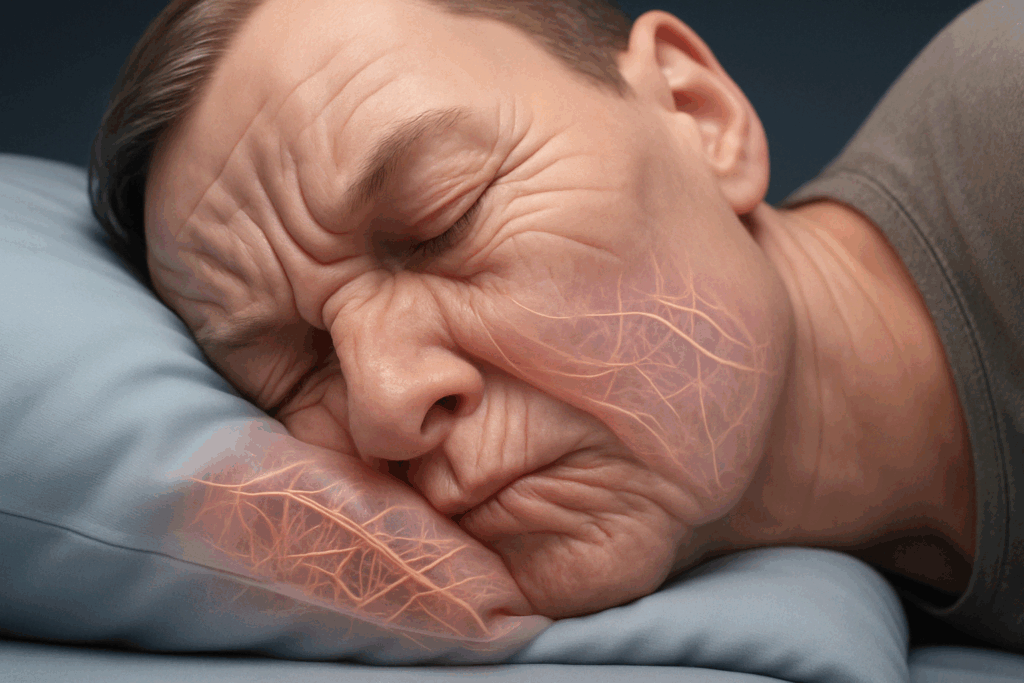
Understanding Sleep Wrinkles and the Science Behind Skin Creasing
Sleep wrinkles are a distinct subset of facial lines, formed not by repetitive muscle movement like expression lines, but through mechanical compression of the skin during sleep. When the face is pressed against a pillow night after night, especially in side or stomach sleeping positions, the skin folds in unnatural directions. This creates linear indentations that, with time, damage the skin’s elastic and collagen framework. The result? Persistent lines that no longer disappear by mid-morning. Unlike dynamic wrinkles, which form from muscular activity, sleep lines are more difficult to treat with neuromodulators like Botox because they do not stem from muscular contraction.
Skin’s vulnerability during sleep stems from multiple biological processes. Overnight, the skin enters a state of repair, producing collagen and releasing growth hormone, but also losing moisture and becoming more susceptible to environmental damage due to decreased barrier function. This means that anything the skin comes into prolonged contact with—such as a cotton pillowcase—can influence its texture, hydration, and elasticity. When a sleeper’s face is constantly compressed, this disrupts circulation in localized areas and inhibits lymphatic drainage, leading to fluid retention and worsened puffiness. It is this prolonged combination of dehydration, compression, and limited oxygenation that culminates in the development of sleep wrinkles.
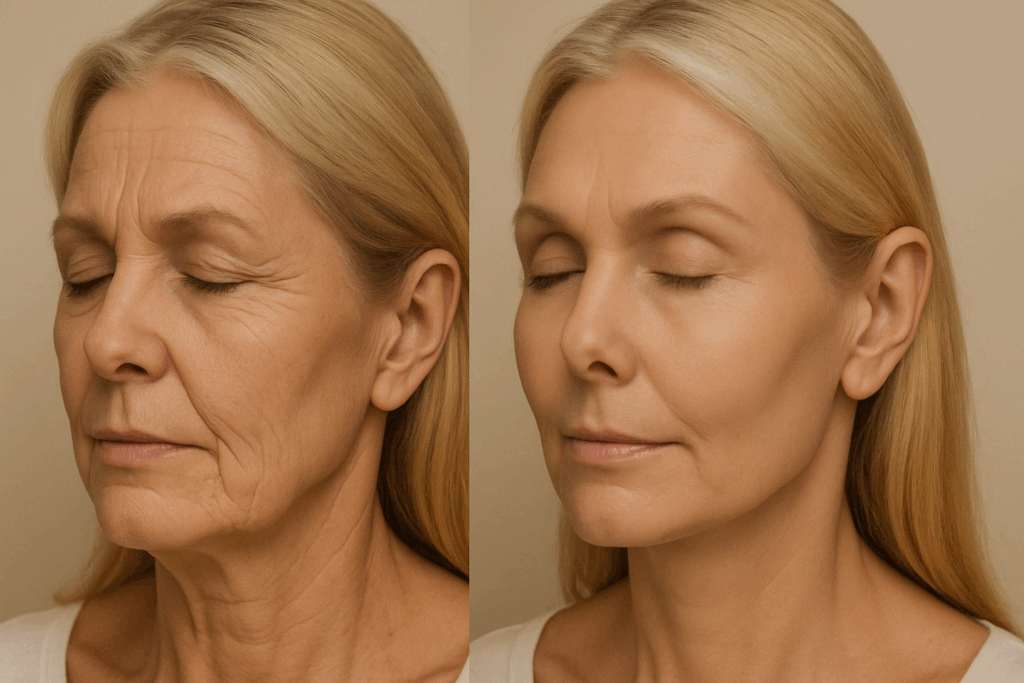
Does Sleeping on Your Side Cause Wrinkles? Exploring the Clinical Truth
Many patients wonder: does sleeping on your side cause wrinkles, or is it merely an old wives’ tale? Dermatological research affirms that side sleeping does contribute significantly to facial wrinkling, especially along the cheeks, nasolabial folds, and chin. The mechanism is straightforward—repetitive mechanical stress breaks down collagen fibers, the essential structural protein that keeps skin smooth and supple. With age, the skin’s natural regenerative capacity decreases, and so the lines caused by pressure become increasingly stubborn. Side sleepers often experience asymmetrical aging, with one side of the face developing deeper folds and sagging earlier than the other.
Medical imaging and photographic analysis have supported these claims. Studies using silicone molds and 3D facial scanning reveal that chronic side sleeping correlates with vertical wrinkles that are not present on individuals who predominantly sleep on their backs. While the visible impact might be minimal in youth due to the skin’s robust elasticity, the cumulative effect over years becomes unmistakable. Therefore, acknowledging that sleeping on your side causes wrinkles is not only relevant for cosmetic concerns—it reflects the broader principle that lifestyle behaviors shape skin aging trajectories.
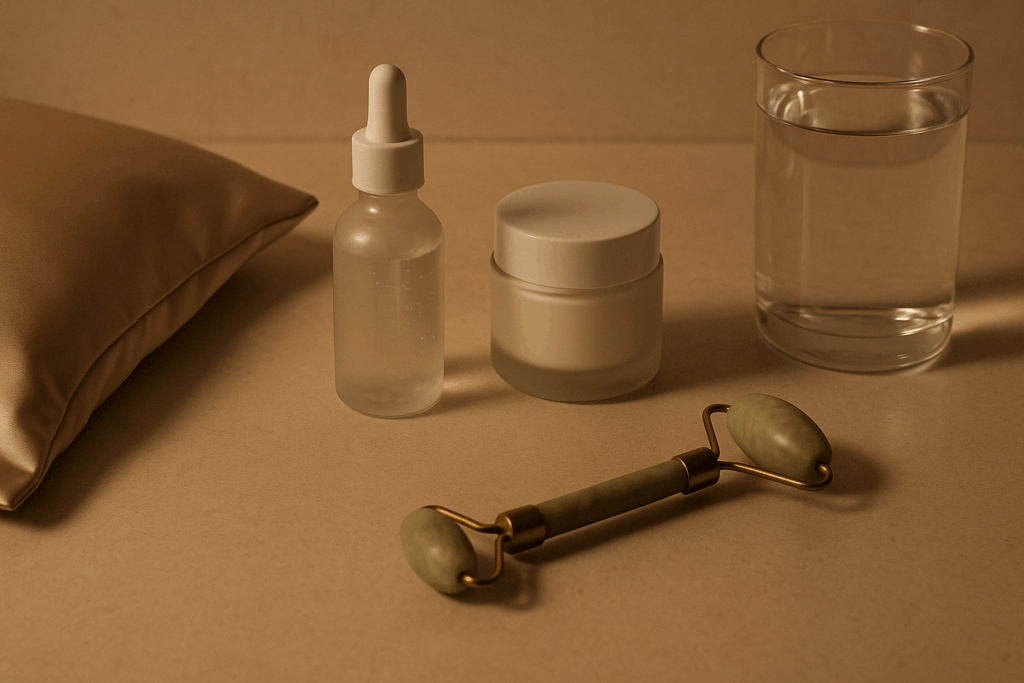
How to Get Rid of Sleep Lines on Face Quickly: Immediate and Long-Term Solutions
If you’ve awakened with sleep marks on your face and need a fast fix, several strategies can help reverse these creases before they settle in. The first and most immediate step is to rehydrate the skin. Applying a hydrating serum containing hyaluronic acid can help plump the skin and temporarily smooth fine lines. Following up with a gentle facial massage using upward strokes—either with clean hands or a jade roller—stimulates lymphatic drainage, reduces puffiness, and encourages circulation, allowing the skin to bounce back faster.
For those seeking to learn how to get rid of sleep lines quickly on a more permanent basis, consistency in nighttime skincare is key. Incorporating retinol into a nightly routine accelerates cellular turnover and encourages collagen production, gradually diminishing the appearance of fine lines. Peptides and growth factors, often found in advanced night creams, further assist in rebuilding the skin’s structure. For individuals experiencing deeper creases that resist topical solutions, professional treatments such as microneedling, laser resurfacing, and fractional radiofrequency can deliver targeted collagen induction and skin tightening over time.
Silk pillowcases also offer a simple but effective intervention. Unlike cotton, which creates friction and absorbs skin oils, silk allows the face to glide across the surface without tugging or compressing the skin. Many dermatologists now recommend switching to silk or satin pillowcases as part of an anti-aging skincare protocol—not just for how to get rid of sleep lines, but also for preserving hair health and reducing overnight moisture loss.
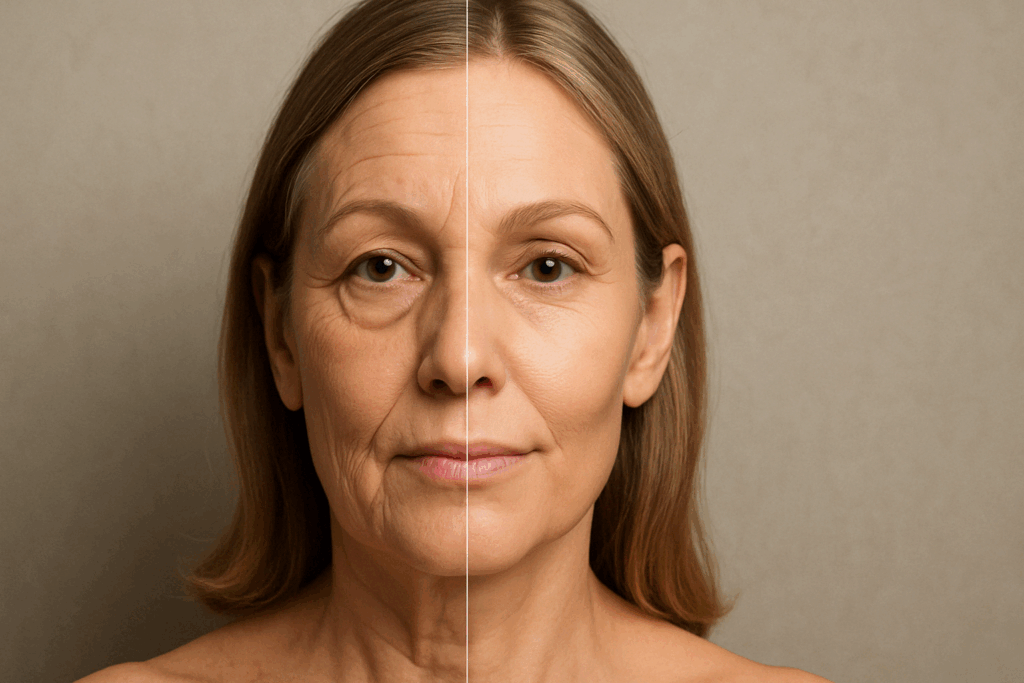
Side Sleeping Wrinkles and Facial Asymmetry: Why It Matters
Facial symmetry is widely associated with youthfulness and perceived attractiveness. Unfortunately, side sleeping wrinkles often cause imbalances that subtly distort the facial landscape. Over time, repetitive pressure on one side of the face can lead to flattening of the cheek, deepening of nasolabial folds, and even a drooping appearance along the jawline. Patients often express concern about one side of the face appearing older than the other, and in many cases, side sleeping is a contributing factor.
While it may seem unrealistic to change sleeping positions entirely, awareness of this connection is a vital first step. Transitioning to a back sleeping posture offers the most effective strategy to prevent and reduce side sleeping wrinkles. If complete retraining isn’t feasible, specialized anti-wrinkle pillows are now available that support the head and neck while minimizing contact with facial skin. These pillows feature ergonomic contours and memory foam construction, designed specifically to accommodate the curves of the face without exerting pressure.
Addressing the emotional component is also important. For individuals distressed by visible asymmetry, side sleeping wrinkles can impact self-esteem and body image. In clinical settings, dermatologists often use before-and-after imaging to track progress and reassure patients that changes are possible through lifestyle modification and appropriate interventions. Ultimately, being mindful of sleep position is not only a cosmetic issue but an extension of total skin wellness.
Sleep Marks on Face: Daily Habits That Make a Difference
The phenomenon of sleep marks on the face, while often temporary, offers insight into deeper skincare and health behaviors. These lines typically appear as diagonal creases across the cheeks or forehead after sleeping in a compressed position. While they often fade within an hour, repeated occurrence can eventually lead to lasting lines. One of the most effective strategies to minimize sleep marks is developing a pre-bedtime ritual that focuses on moisture retention and skin resilience.
Before sleep, applying a rich night cream or occlusive moisturizer helps maintain hydration and creates a cushion between the skin and the pillow. Formulas with ceramides, niacinamide, and panthenol help strengthen the skin barrier and reduce overnight moisture loss, making the skin more resistant to folding. It’s also beneficial to sleep in a slightly elevated position to promote lymphatic flow and reduce facial puffiness, which often exacerbates the appearance of sleep creases.
For those who experience recurring sleep marks, it’s worth examining pillow quality. Overly firm or overstuffed pillows increase skin compression, while flatter, ergonomic pillows reduce angular pressure on the face. Ensuring that pillowcases are changed regularly also reduces irritation and inflammation, which can compound the impact of nightly creasing. Daily habits like these may seem small, but over time they serve as the foundation for preserving youthful skin tone and texture.
Wrinkles from Pillow Pressure: Why Material and Structure Matter
Much like choosing the right skincare products, selecting the right bedding materials is a critical part of addressing wrinkles from pillow pressure. Cotton pillowcases, while affordable and widely used, are often coarse and absorbent. This results in increased friction and tension across the skin as you shift during sleep. Over time, this daily microtrauma contributes to the development of sleep wrinkles and uneven texture.
In contrast, silk and satin pillowcases offer a smoother, less absorbent surface that reduces drag and minimizes pulling. Beyond the fabric itself, the structure of the pillow plays a significant role. High-density memory foam pillows contour to the shape of the head and neck, distributing weight evenly and reducing localized pressure that causes creasing. Anti-aging pillows with cut-outs or raised borders provide additional protection by keeping the face slightly elevated and away from the sleeping surface.
Another overlooked contributor is sleeping temperature. Hot, humid environments increase perspiration, which when trapped against the skin by fabric, can weaken the skin barrier and make it more vulnerable to indentation. Using breathable pillowcases and temperature-regulating pillows can mitigate this issue, preserving skin integrity overnight. As such, reducing wrinkles from pillow pressure requires a holistic approach that combines textile technology with ergonomic design.
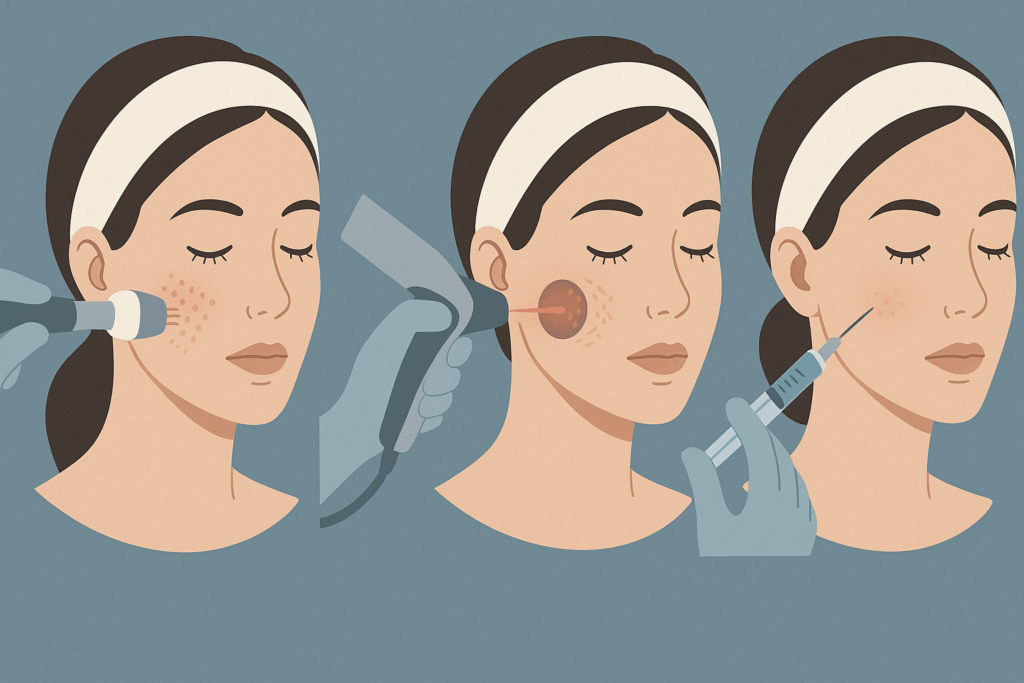
How to Get Rid of Sleep Wrinkles Using Professional Dermatological Treatments
While lifestyle adjustments are a first-line approach, some individuals may find that their sleep wrinkles are deeply ingrained and require professional intervention. Dermatologists have several tools at their disposal to target these creases and stimulate skin remodeling. One of the most effective procedures for sleep-induced wrinkles is microneedling with radiofrequency (RF), which uses tiny needles and heat to activate collagen production deep within the dermis. This treatment smooths lines over several sessions and can be tailored to specific areas of concern.
Laser resurfacing, such as CO2 or fractional erbium lasers, offers another option for those seeking more dramatic results. These lasers remove damaged skin layers and promote new cell growth, effectively reducing the visibility of sleep wrinkles. For milder lines, injectable dermal fillers like hyaluronic acid can be strategically placed to plump sunken areas and restore facial volume, particularly in the cheeks and around the mouth.
However, these treatments are not one-size-fits-all. A board-certified dermatologist should conduct a comprehensive evaluation to determine the underlying skin condition, lifestyle factors, and medical history before recommending an appropriate procedure. Combining treatments with medical-grade skincare products—including retinoids, antioxidants, and peptide serums—can enhance results and prolong improvements. This integrated strategy ensures that sleep wrinkles are not only treated at the surface but also at the structural level.
Reframing Skin Aging: The Psychological Toll of Sleep Wrinkles
For many, the visible signs of sleep wrinkles trigger more than cosmetic concern—they tap into deeper insecurities about aging and self-image. In a culture that often equates youth with vitality, the sudden appearance of pillow-induced lines can feel jarring. Particularly for individuals who already struggle with self-confidence or body image, sleep lines may be a source of undue stress. Addressing these concerns with empathy is an essential part of holistic dermatological care.
Mental health professionals have increasingly emphasized the importance of body neutrality—recognizing that our appearance does not define our worth. Nonetheless, the emotional burden of visible aging signs is real, and validating those feelings is important. Dermatologists who take the time to understand their patients’ emotional context often achieve better long-term outcomes, not just in skin appearance but in patient satisfaction and well-being.
Incorporating mindfulness into skincare routines can also support psychological resilience. Rituals like gentle facial massage, aromatherapy, or journaling before bed can help anchor the experience of self-care in something deeper than appearance. These practices help reframe the goal of how to get rid of sleep lines on your face quickly—not as a race against time, but as an act of compassionate maintenance.
How to Prevent Sleep Lines Before They Start: Proactive Skincare and Lifestyle Strategies
The most effective way to manage sleep wrinkles is to prevent them before they become permanent. Prevention begins with intentional sleep hygiene and targeted skincare. Training oneself to sleep on the back, while difficult, offers the single most protective measure against facial creasing. Specialized sleep pillows, like wedge pillows or those with cradling cutouts, can assist in this transition and provide the support necessary for sustained back sleeping.
Nighttime skincare should focus on strengthening the skin barrier and boosting elasticity. This includes using retinoids (if tolerated), hyaluronic acid for hydration, and ceramide-rich moisturizers to maintain skin integrity. Applying these products on slightly damp skin can enhance absorption and lock in moisture. For additional protection, applying a thin layer of occlusive balm over targeted areas can physically buffer the skin against compression.
Limiting alcohol and caffeine intake before bed supports overall skin health by minimizing dehydration and inflammation. Staying hydrated throughout the day also ensures the skin remains plump and better able to recover from temporary indentations. Additionally, incorporating antioxidant-rich foods and omega-3 fatty acids into the diet helps preserve collagen stores and reduce oxidative stress, both of which are critical for wrinkle prevention.
Frequently Asked Questions: How to Get Rid of Sleep Lines on Your Face Quickly
1. Can facial yoga or exercise help reduce sleep wrinkles and side sleeping lines?
Yes, facial yoga can be surprisingly effective when targeting sleep wrinkles, especially those that form from repetitive compression due to side sleeping. Exercises that engage and stretch the cheek muscles, forehead, and jawline may improve circulation and support collagen resilience in areas prone to side sleeping wrinkles. By toning the underlying facial muscles, facial yoga helps improve skin tautness, which may reduce the likelihood of wrinkles from pillow pressure becoming permanent. While facial yoga won’t immediately remove sleep lines on your face, it can enhance skin elasticity and offer a complementary strategy alongside topical skincare. For best results, combine consistent facial exercise with hydration-focused products and sleep posture awareness to combat sleeper face from multiple angles.
2. Are there any supplements that can help reduce sleep marks on the face over time?
Supplements that support skin structure and hydration can play a role in reducing persistent sleep marks on the face. Collagen peptides, especially those with type I and III collagen, have been shown in clinical studies to improve skin elasticity and smoothness, which may reduce the visibility of sleep lines on face over time. Hyaluronic acid supplements can also enhance skin hydration from within, potentially making the skin more resilient to the compressive forces that cause wrinkles from pillow contact. Additionally, vitamin C and zinc support wound healing and collagen synthesis, providing structural support against long-term effects of side sleeping wrinkles. While not a standalone solution for how to get rid of sleep lines quickly, supplementation can strengthen the skin’s response to nightly stress and work well in conjunction with external treatments.
3. Can acupuncture or facial cupping help with sleep wrinkles and sleeper face?
Although unconventional, techniques like acupuncture and facial cupping are gaining traction as holistic tools to address sleep wrinkles and the overall effects of sleeper face. Acupuncture may stimulate circulation and trigger collagen production in targeted areas, potentially smoothing mild sleep lines on face and improving skin vitality. Facial cupping, when performed properly and gently, can encourage lymphatic drainage and reduce fluid retention that worsens sleep marks on face upon waking. However, these treatments must be performed by trained professionals to avoid irritation or bruising, particularly in individuals with sensitive skin. While more research is needed, these alternative therapies show promise as part of an integrative plan for how to get rid of sleep lines.
4. Do weighted blankets make sleep lines worse or better?
Weighted blankets provide deep pressure stimulation that can improve sleep quality and reduce stress-related facial tension, but they may also contribute indirectly to sleep wrinkles if not used thoughtfully. Because users tend to stay in one position longer under a weighted blanket, side sleepers may experience more consistent pressure on one side of the face, potentially worsening wrinkles from pillow compression. For those concerned about how to get rid of sleep lines on face quickly, using a weighted blanket with a supportive back-sleeping pillow can reduce facial contact and help prevent deep sleep marks on face. It’s also wise to combine weighted blankets with silk pillowcases to minimize skin friction. Ultimately, weighted blankets offer emotional and physiological benefits, but they should be part of a wrinkle-conscious sleeping environment.
5. Is there a psychological link between sleep lines and self-image?
Yes, emerging psychological research supports the idea that sleep wrinkles—particularly those that appear suddenly or worsen asymmetry—can impact self-esteem and body image. People who wake up with sleep marks on face may perceive themselves as tired or prematurely aged, even if those impressions fade physically within an hour. For individuals already sensitive about aging or facial appearance, sleep wrinkles can reinforce negative self-evaluations and increase emotional stress. Developing awareness around the temporary nature of most sleep lines on face and establishing a morning routine to boost circulation and skin tone can help reframe the emotional impact. Addressing sleeper face isn’t just about appearance—it’s often about restoring a sense of personal control and confidence.
6. Can adjusting sleep cycles or circadian rhythm help minimize sleep wrinkles?
There is growing evidence that consistent sleep-wake cycles improve the skin’s ability to recover and may reduce the depth of sleep wrinkles over time. Skin regeneration and collagen synthesis follow circadian rhythms, and irregular sleep schedules can impair overnight repair mechanisms that help resolve sleep marks on face. People who go to bed and wake up at consistent times experience fewer disruptions in melatonin secretion and cortisol levels—both of which play roles in inflammation and skin aging. A well-regulated circadian rhythm also reduces tossing and turning, which may limit side sleeping wrinkles caused by prolonged facial pressure. In this way, improving your internal clock can enhance your strategy for how to get rid of sleep wrinkles naturally and efficiently.
7. Are there emerging technologies specifically designed to prevent wrinkles from pillow pressure?
Yes, the skincare and sleep industries are actively developing products designed to reduce wrinkles from pillow pressure. Smart anti-wrinkle pillows with built-in sensors and shape memory foams are now available, helping guide the sleeper into optimal back-sleeping postures throughout the night. Some designs include cooling features to regulate skin temperature, which minimizes inflammation and reduces the likelihood of sleep lines forming. Additionally, wearable silicone pads for overnight use on the chest and face are becoming more common and have been shown to reduce sleep wrinkles and promote collagen stability. These advancements show promise for individuals who are serious about preventing and treating side sleeping wrinkles while maintaining skin health in a technologically supported way.
8. Can nighttime breathing patterns influence the appearance of sleeper face?
Surprisingly, yes—chronic mouth breathing or disrupted nighttime breathing patterns can contribute to facial sagging and exacerbate the appearance of sleeper face. Breathing through the mouth often leads to dehydration, especially around the lips and cheeks, making sleep lines on face more noticeable upon waking. It can also cause micro muscle tension in the lower face, indirectly influencing wrinkle formation in those areas compressed during side sleeping. People with undiagnosed sleep apnea or nasal obstruction may be more prone to restless sleep and inconsistent facial pressure, both of which aggravate wrinkles from pillow interaction. Nasal strips, humidifiers, or consulting an ENT specialist can help optimize breathing patterns and support strategies for how to get rid of sleep lines.
9. How do hormonal changes affect sleep wrinkle development in women?
Hormonal fluctuations, especially during perimenopause and menopause, can accelerate the formation of sleep wrinkles by reducing estrogen levels, which play a critical role in collagen maintenance. Declining estrogen results in thinner, drier skin that is more susceptible to creasing, particularly in areas that face nightly pressure. Women may notice an increase in sleep marks on face and deeper side sleeping wrinkles during these transitional phases, especially when combined with poor sleep quality. Hormone replacement therapy (HRT), phytoestrogens, and targeted skincare rich in peptides and ceramides may help mitigate these effects. Addressing how to get rid of sleep wrinkles in this context often involves a multi-pronged approach, considering both hormonal health and skincare.
10. What are some practical ways to retrain yourself to sleep on your back?
Back sleeping is one of the most effective strategies for reducing sleep lines on face, but it requires effort and consistency to adopt. One technique involves placing a pillow under the knees to reduce lower back strain and discourage rolling to the side. Another method is to use a U-shaped pillow or a travel neck pillow to stabilize the head and keep the face from turning. Some people have success sewing tennis balls into the sides of a pajama top to discourage side sleeping, although this method may be uncomfortable for some. Over time, positive reinforcement and pairing new sleep behaviors with relaxation cues—such as aromatherapy or calming music—can help create an association between back sleeping and comfort, reducing your reliance on side positions that worsen wrinkles from pillow compression.
Rethinking Aging: A Conclusion on How to Get Rid of Sleep Lines on Your Face Quickly
Understanding how to get rid of sleep lines on your face quickly is more than a quest for smoother skin—it’s a gateway to rethinking how we engage with aging, wellness, and self-care. Whether you’re grappling with sleep marks on your face from a restless night or noticing the cumulative effects of years spent side sleeping, the solutions are as multifaceted as the problem itself. From adjusting sleep posture and investing in better bedding to embracing professional dermatological treatments, every choice contributes to a broader strategy of skin preservation.
While side sleeping wrinkles and wrinkles from pillow pressure may seem like minor concerns, they speak volumes about the interconnectedness of our daily habits and long-term skin health. By taking proactive steps—both physical and psychological—we not only address the question of how to get rid of sleep wrinkles but also cultivate a more empowered, informed, and compassionate relationship with our bodies. The goal is not perfection, but presence: being present with ourselves, our skin, and the choices we make to support our well-being across a lifetime.
Was this article helpful? Don’t let it stop with you. Share it right now with someone who needs to see it—whether it’s a friend, a colleague, or your whole network. And if staying ahead on this topic matters to you, subscribe to this publication for the most up-to-date information. You’ll get the latest insights delivered straight to you—no searching, no missing out.
Further Reading:
Woke up with pillow lines on your face? Learn to fix them!
14 Ways to Prevent Sleep Lines, According to Derms
Sleep wrinkles are real. Here’s how they leave their mark
Disclaimer
The information contained in this article is provided for general informational purposes only and is not intended to serve as medical, legal, or professional advice. While Health11News strives to present accurate, up-to-date, and reliable content, no warranty or guarantee, expressed or implied, is made regarding the completeness, accuracy, or adequacy of the information provided. Readers are strongly advised to seek the guidance of a qualified healthcare provider or other relevant professionals before acting on any information contained in this article. Health11News, its authors, editors, and contributors expressly disclaim any liability for any damages, losses, or consequences arising directly or indirectly from the use, interpretation, or reliance on any information presented herein. The views and opinions expressed in this article are those of the author(s) and do not necessarily reflect the official policies or positions of Health11News.